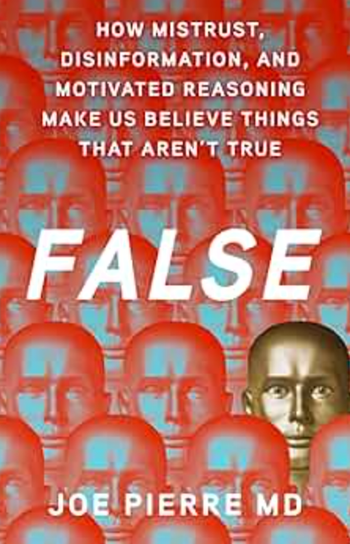
The Vegetarian
What does Han Kang’s 2007 book reveal about psychiatric diagnoses and societal pressure?
BOOK REVIEW
By Han Kang, translated by Deborah Smith
208 pages• $15.24 (paperback)
Reviewed Sharon Packer, MD
South Korea’s prominence in both pop and high culture has skyrocketed in recent years, first with the Oscar-winning film “Parasite” (2019), and then with a hit television series, “Squid Game” (2021). Boy band BTS attracted international acclaim, amping up the allure of music’s Korean Wave.
Yet a Nobel Prize in literature had never been won by a South Korean author until 2024. In 2024, The Vegetarian by Han Kang, earned that accolade. Han Kang became the first Asian woman to achieve this honor and is 1 of only 18 women Nobel Laureates to date.
The Vegetarian is not a newly released book. Despite its title, it is not a book about gastronomy, or even about eating disorders, although such symptoms play an important part in the surreal and allegorical plot. Published in 2007 by Changi Publishers in South Korea, and in 2016 in English, with Deborah Smith as the translator, The Vegetarian was adapted for film in 2007 by Lim Woo-Seong. That film subsequently played at Sundance.
When The Vegetarian won the Man Booker Prize in 2016, the Yi Sang Literary Prize, and the New York Times’ 2016 Book Review listed it as 1 of the year’s 10 best books, international fame followed. Yet this book was not Han Kang’s only newsworthy publication. Rather, it was she who wrote about atrocities committed 44 years ago, when South Korea imposed martial law amidst student-led pro-democracy uprisings in Gwangju, the city of the author’s birth.1
The significance of The Vegetarian’sNobel Prize cannot be downplayed, either by the learned world at large or by psychiatrists, who may respond to the psychiatric themes that pepper the plot (but which serve as metaphors for broader social and political concerns that vex the author more than the protagonist’s overt eating disorder or by the psychosis and psychiatric hospitalization described in the text).
The author has previously explained her goals, noting that her novel is a treatise about patriarchy in South Korean society and the role of women overall in her culture.
The Vegetarian’s plot revolves around an average-appearing and unassuming South Korean woman, a housewife and part-time cartoonist, who at one point was cajoled into performing in her brother-in-law’s sexually explicit video. Responding to a series of disturbing dreams about animal slaughter, our heroine Yeong-Hye stops eating meat. She becomes anorexic, progressing to frank psychosis that leads to her psychiatric hospitalization. Her dreams blur the lines between imagination and hallucination.
Her metamorphosis unnerves those around her, to the point that her husband, brother-in-law, and sister are moved to tell Yeong-Hye’s story, as well as their own stories. The novel is structured in 3 parts, each told from the personal perspective of these 3 relatives.
Actions that initially appear to be a matter of choice eventually escalate and spiral out of control. Just as anorexia has been viewed by some as an adolescent’s way to attain personal agency, and to separate herself from parental pressure, Yeong-Hye’s anorexia cum vegetarianism represents her struggle to assert control over her body while residing in a patriarchal society that spells out strict behavioral norms for everyone. That society further circumscribes norms for women, expecting them to be subservient and self-sacrificing.
The novel’s metatext comments on political issues faced by 21st century South Korea, where traditional values clash with trends toward modernization, and where individuation and innovation, which are so valued in the Western World, contrast with Asian pressures toward conformity with the collective. In South Korea, in particular, this controversial push for individual autonomy contrasts dramatically with authoritarian dictatorships of the past.
Although Kang’s Nobel Prize is a first for South Korean authors, the centrality of psychiatric themes in fiction, acclaimed or otherwise, is by no means unique. We can list dozens, maybe hundreds, of revered works of literature or drama that revolve around mental disorders. Film and video games, which evolved long after the Nobel Prizes were established, include even more examples. Nobelists Ernest Hemingway and Eugene O’Neill are prominent writers who focused on psychiatric, and substance use concerns.
Ancient authors tackled related themes long before the Nobel Prize was established at the turn of the 20th century. Going far back in time, Ajax (c 450-430 BCE) appears in a tragedy by Sophocles. Madness, murder, and mayhem pepper dramas about Heracles in Euripides’ tragedy (416 BCE) and in Hercules Furens, by Seneca the Younger (c 40-60 CE).
We find a long list of later literary works that reference mental disorders, such as Shakespeare’s Hamlet (c 1600); Cervantes’ Don Quixote (1605/1615); Goethe’s The Sorrows of Young Werther (1774); Sir Walter Scott’s The Bride of Lammermoor(1819); Gogol’s Diary of a Madman (1835); and Alexandre Dumas’s The Count of Monte Cristo (1844).
In the mid-to-late 19th century, we find Charlotte Brontë’s Jane Eyre (1847); Aurelia (Aurélia ou le rêve et la vie) (1855) by Gérard de Nerval; Madame Bovary (1856) by Gustave Flaubert; and Crime and Punishment (1866) by Fyodor Dostoevsky, who happened to have epilepsy.
The year 1892 saw the publication of 2 seminal works: “The Yellow Wallpaper” (1892), a short story by Charlotte Perkins Gilman, which became required reading in many women’s studies courses. Anton Chekhov, MD, (himself a practicing physician) wrote a short story, “Ward Number Six” (1892), about a psychiatrist whose superiors deem him to be psychotic because he listens to his psychotic patients (at a time when words of the mentally ill were dismissed as worthless). This story was a favorite of anti-psychiatrist and counterculture icon, R.D. Laing.2
In detective fiction, we encounter The Adventure of the Devil's Foot (1910) by Sir Arthur Conan Doyle (author of Sherlock Holmes, 1887). Crime novelist Agatha Christie—the best-selling author of all time—chronicles psychosis in The A.B.C. Murders (1936); Appointment with Death (1938); And Then There Were None (1939). Science fiction occasionally tackles themes of madness. H. G. Wells (better known for his 1898 The War of the Worlds) wrote about a delusional laundryman in Christina Alberta's Father (1925). Clans of the Alphane Moon (1964),by Philip K. Dick, is set in an imaginary world where former psychiatric patients organize caste-like groups along psychiatric diagnostic lines and create a functional society. Writing in Lover, When You're Near Me (1952), the remarkably prolific science fiction luminary Richard Matheson (who wrote for Twilight Zone and much more) revolves around a man whose will is overpowered by a woman of an extraterrestrial race. In Breakfast of Champions (1973), Kurt Vonnegut, another counterculture icon, explores madness memes. Kurt’s son Mark Vonnegut—who later became a pediatrician and recently retired in 2023—describes his personal experiences during (and after) a schizophreniform break in The Eden Express (1975).
Perhaps the most enduring fictional work about psychosis is Robert Louis Stevenson’s Strange Case of Dr Jekyll and Mr Hyde(1886). Oscar Wilde’s The Picture of Dorian Gray(1891) merits mention, as does the “Doom Patrol” comic book series, when written by Grant Morrison (of Arkham Asylum fame). Among Morrison’s notable Arkham characters is a clan of psychiatrists who inherited a neurodegenerative gene that promotes psychosis. Their bizarre behavior pushes the plot.3
Even well-known fantasy writers have been known to reference psychosis. Harry Potter and the Order of the Phoenix (2003) by J. K. Rowling explores magic-induced psychosis. J. R. R. Tolkien's The Hobbit, The Two Towers, and The Return of the King, written in 1937, 1954, and 1955, respectively, allude to a variant of paranoia called “Dragon Sickness.” Tolkien’s The Silmarillion (1977) collates myths about Númenor, where King Tar-Atanamir was "witless.”
Illustrious reality-based autobiographical works include Tender is the Night (1934), by F. Scott Fitzgerald. Fitzgerald writes about wife’s mental deterioration and hospitalization. The Bell Jar, written in 1963 by Sylvia Plath, is a fictionalized account of Plath's struggles with depression—which eventually ended in her own suicide. Ken Kesey’s 1962 novel, One Flew Over the Cuckoo's Nest, inspired a history-making movie about a real-life mental hospital and wasinspired by Kesey’s observations while working as an orderly at the hospital. Sybil, a best-selling 1973 novel about multiple personality disorder, was attacked for embellishing the protagonist’s symptoms and for the unorthodox methods used by the psychiatrist, but those after-the-fact barbs did not detract from the book’s influence.
Another enduring example of this meme is The Catcher in the Rye (1951), by J. D. Salinger, where the protagonist Holden Caufield describes himself as a “madman” and indirectly alludes to the astounding percentage of disabling post-war PTSD among WWII veterans.
The title of American Psycho (1991), by Bret Easton Ellis, speaks for itself. Fight Club (1996) by Chuck Palahniuk is more subtle. Many Stephen King books, including The Shining (1977) and The Green Mile (1996), reference mental disorders. Some say that it is difficult to identify King’s novels without psychiatric themes. Interestingly, the remarkably successful author is public about his battle with alcohol and his AA attendance.
At this point, I must stop this still incomplete chronicle of mental illness memes in literature, because the list is so vast, and this project deserves an article, if not an entire book,4 all its own. But, looping back to The Vegetarian, which uses mental illness as a metaphor, rather than as a signifier for psychiatric concerns per se, we must wonder if any of the previous examples similarly use mental illness as an allegory for wider societal concerns.
Whatever the answers to that question may be, one thing is for certain: some of Han Kang’s earlier books, such as Human Acts (2014/2017), chronicle Korea’s struggles for democracy and can be read as both literal and prophetic. Through a strange synchronicity, Han Kang received her Nobel Prize on December 7, 2024, in the same turbulent week when the President of South Korea declared (and then reversed) martial law, and when he was subsequently deposed and then reinstated, only to be impeached a few days later. We can expect that Han Kang’s books from decades past will gain a wider readership, both because of her Nobel Prize and the curious parallels with recent events that are still unraveling.
Dr Packer is an assistant clinical professor of psychiatry and behavioral sciences at Icahn School of Medicine at Mount Sinai in New York, New York.
References
1. Kim V. Atrocities made a south Korean infamous. A novelist made it immortal. The New York Times. December 6, 2024. Accessed December 6, 2024.
2. Packer S. Book review: Portrait of a Psychiatrist as a Young Man: the Early Writing and Work of R. D. Laing, 1927-1960 by Alan Beveridge. Metapsychology. 2011;15(50).
3. Packer S. Arkham asylum’s criminally insane inmates and psychotic psychiatrists. In: Packer S, ed. Mental Illness in Popular Culture. Praeger; 2017:253-254.
4. Packer S. Mental Illness in Popular Culture. Praeger; 2017.
Let us hear from you! Share comments with your colleagues by emailing PTEditor@mmhgroup.com. Comments may be shared online pending review and editing for style.
Newsletter
Receive trusted psychiatric news, expert analysis, and clinical insights — subscribe today to support your practice and your patients.













